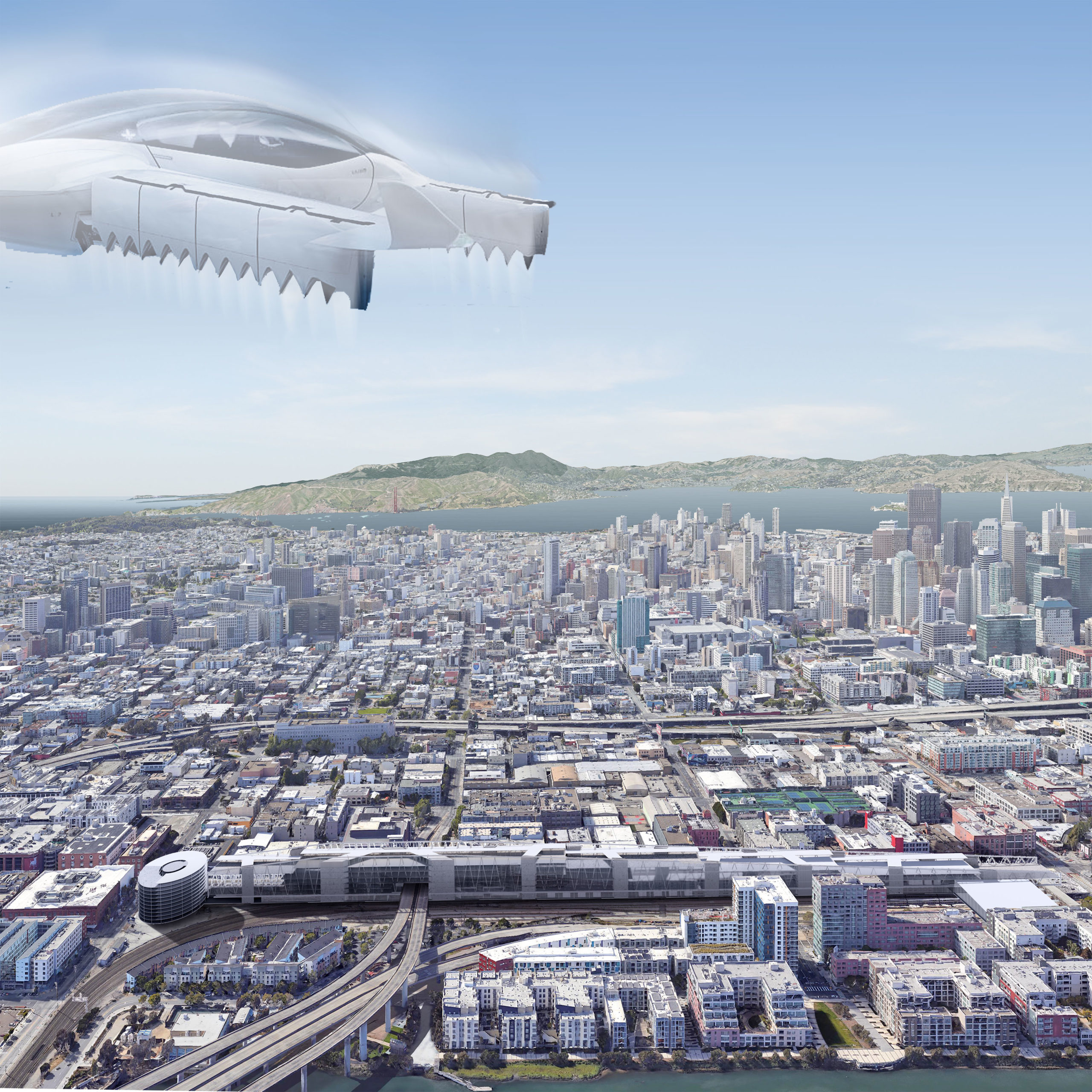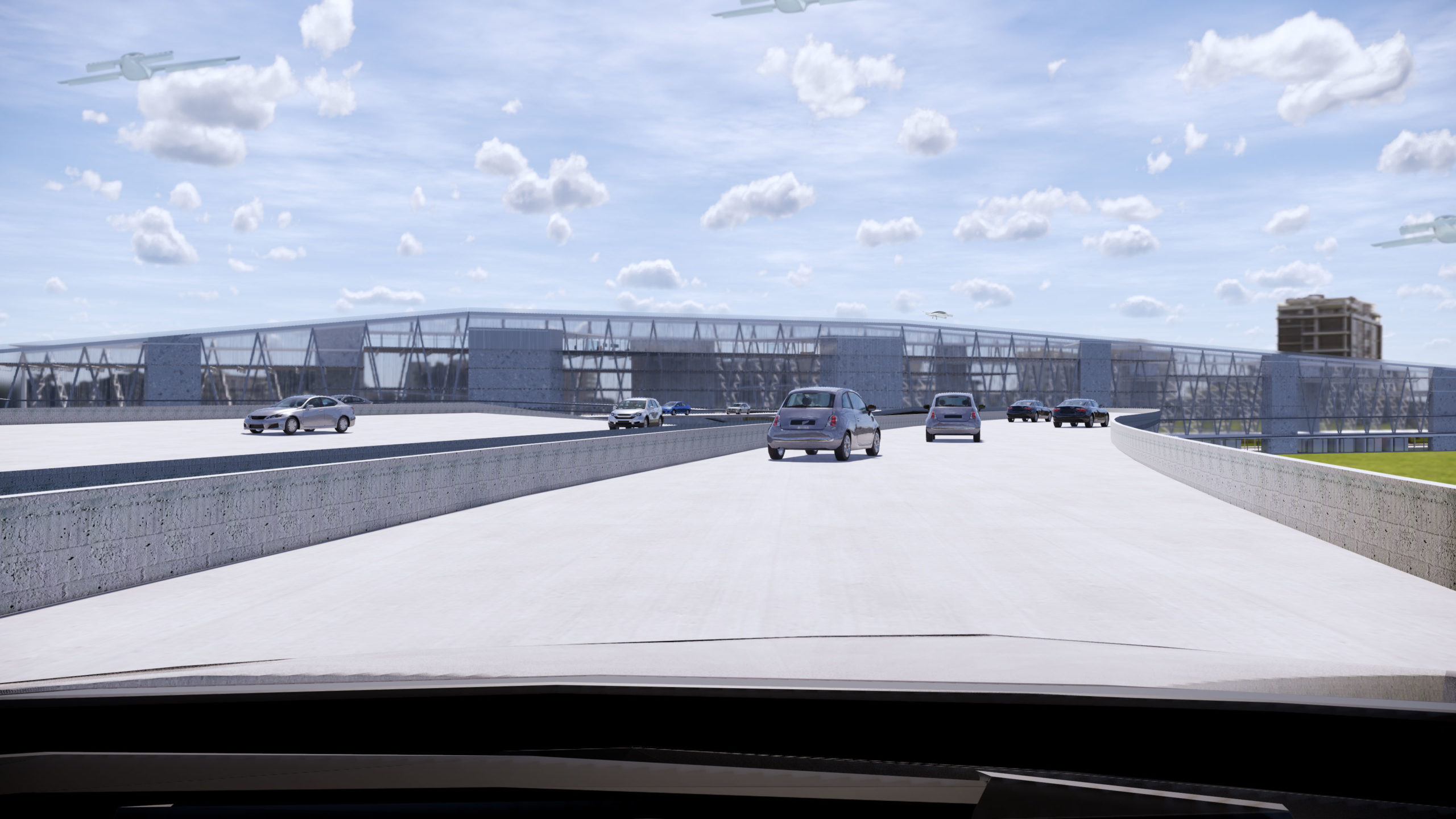Trans Connect – Reshaping the Modern Commute
Master Thesis by: Then Le – M.Arch / Thesis Advisor: Mark Mueckenheim
The future of mobility in San Francisco will rely on the sharing platform and novel modes of transportation. Large modes such as airplanes, trains, and buses will be replaced by autonomous, small, low-occupancy vehicles, both on the ground and in the air. These changes will demand a new type of transportation hub within the city. This thesis proposes a new building type to serve this future need – a multi-mode transportation hub that blends work environments and commerce.

The South of Market neighborhood, once a low-density industrial zone, is now a center of business activity and housing development. Conventional modes of transportation are becoming increasingly congested, and large-scale infrastructure cannot compete for land without displacing the commercial development that it would serve. TRANS-CONNECT augments the existing regional commuter rail station with a bus terminal, rideshare pooling, and an aircraft launch port. Retail spaces, restaurants, and layover services such as showering and sleeping spaces support the commuters that flow through the transit hub daily.
These new modes of transportation utilize renewable energy sources, and TRANS-CONNECT generates the energy needed to refuel the electric vehicles. The building envelope incorporates a industrial-grade photovoltaic array to harvest solar energy. The conditioning of the spaces utilizes a geothermal heat pump and natural ventilation to optimize the operation energy demand.


TRANS-CONNECT envisions a future for the San Francisco Bay Region where multi-modal transit hubs serve business districts and residential neighborhoods with facilities that are scale-appropriate to the communities they serve. This thesis serves as a prototype for a scalable solution that can serve a dense commercial center and residential neighborhoods at the city’s edge. Just as the future of transportation requires rethinking the scale and operational models of the vehicles and modes themselves, so to does the future of the architecture and infrastructure that serves these modes. This thesis attempts to envision that future.

